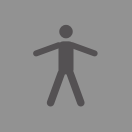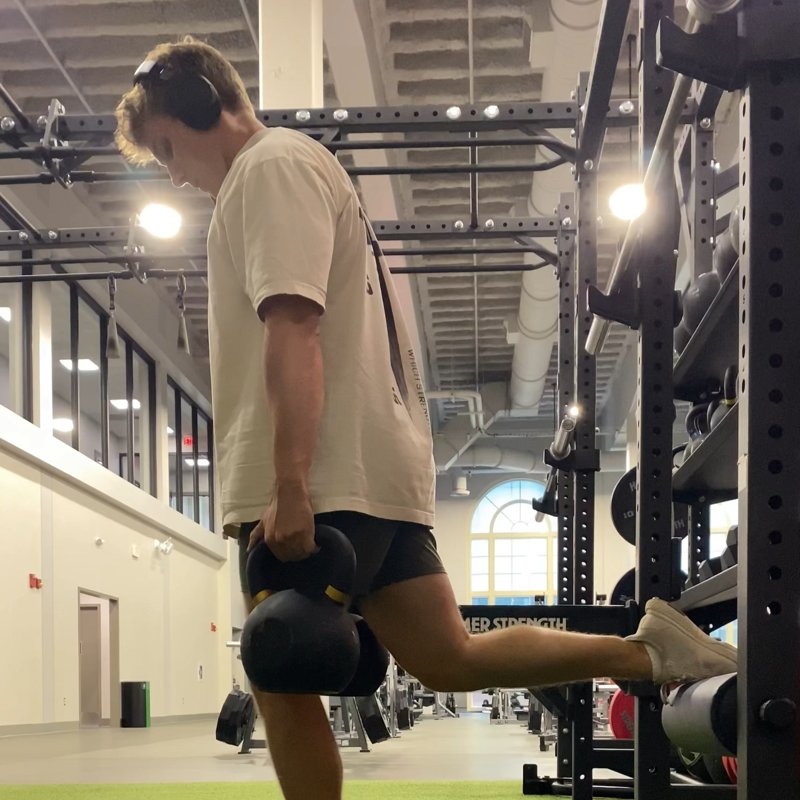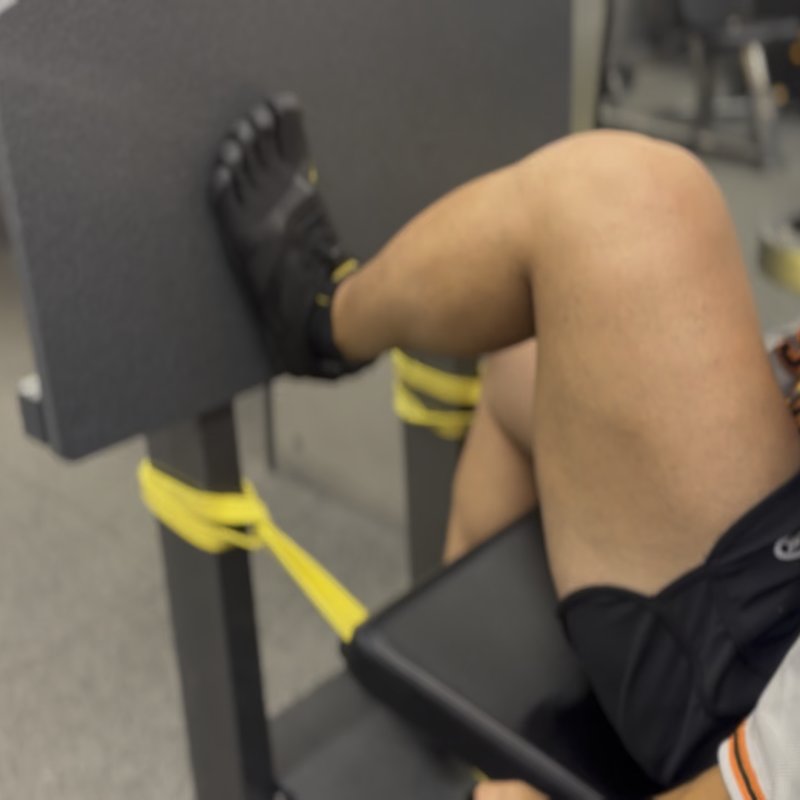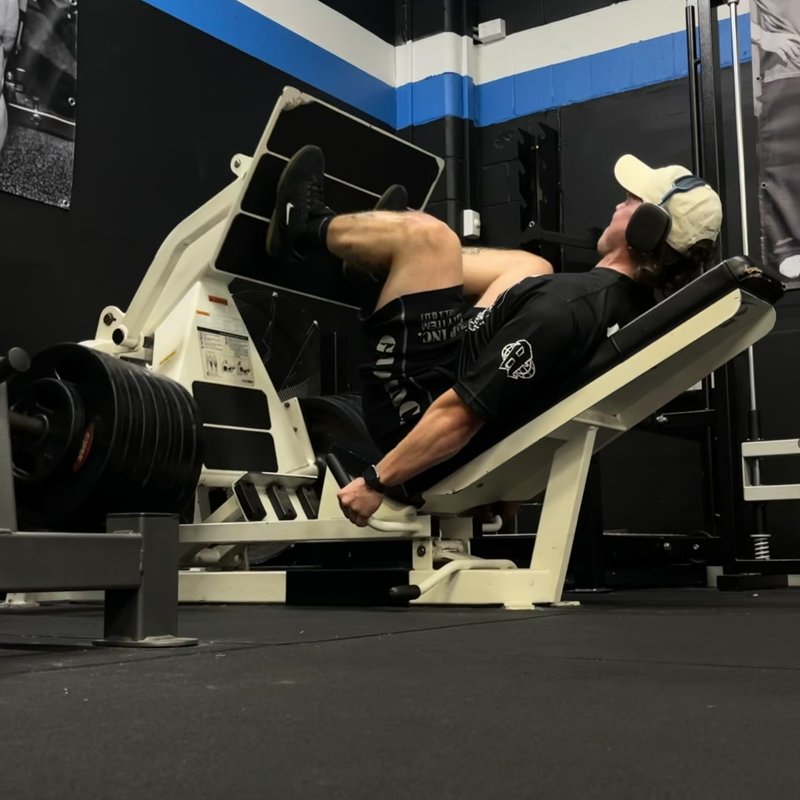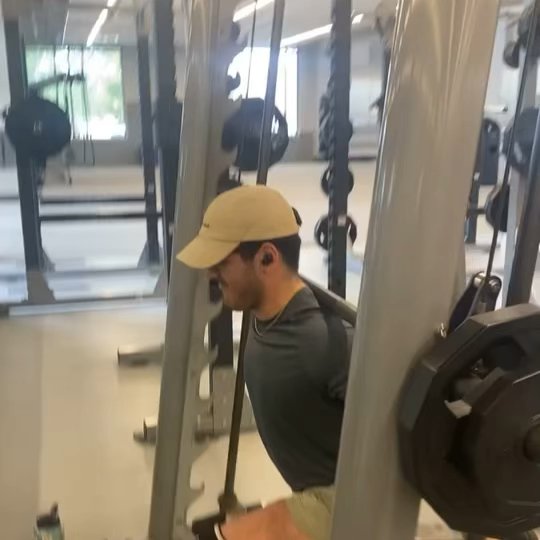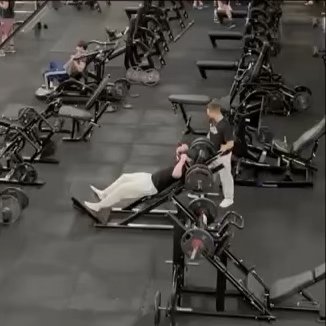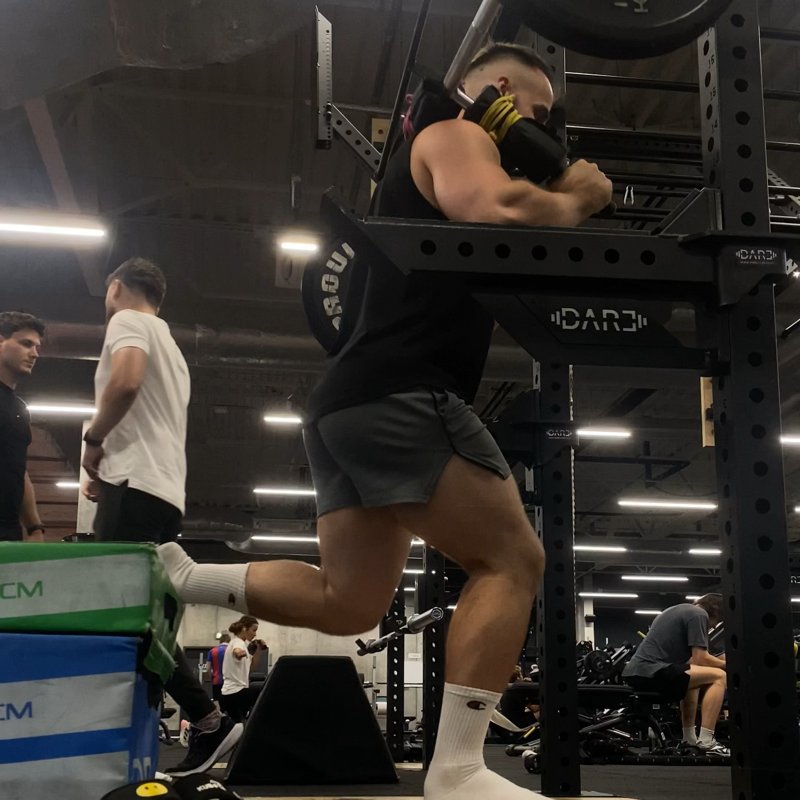Bulgarian Split Squat: The Ultimate Guide
The Bulgarian Split Squat is a challenging unilateral lower body exercise that targets the quadriceps, glutes, and hamstrings while improving balance, correcting muscle imbalances, and enhancing functional strength.
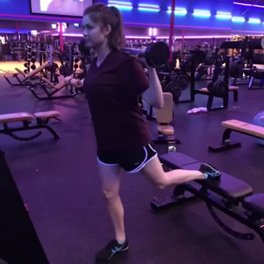
Quick Facts
Key Benefit
Unilateral leg development and balance improvement
Primary Muscles
Glutes, Hamstrings, Quadriceps
Secondary Muscles
Abdominals, Calves, Hip Adductors, Hip Flexors
Equipment
bodyweight, dumbbells (optional), flat bench (optional)
Difficulty
Intermediate
Type
Strength
In This Guide
Ready to master the Bulgarian Split Squat?
Track your progress, see improvements over time, and build strength consistently.
Download GravitusThe Bulgarian Split Squat is a highly effective unilateral exercise that deserves a place in virtually any lower body training program. Also known as the rear foot elevated split squat, this movement builds strength, muscle, balance, and coordination through a challenging single-leg focus. Unlike traditional bilateral exercises like back squats, the Bulgarian split squat trains each leg independently, helping to identify and correct strength imbalances that often develop between dominant and non-dominant sides. This unilateral training is particularly valuable for athletes in sports requiring single-leg strength and stability, such as running, basketball, soccer, and tennis. The exercise's versatility makes it suitable for almost any training goal. Bodyweight variations serve as excellent rehabilitation tools, while weighted versions can build substantial muscle mass and strength. By adjusting foot position and torso angle, you can shift emphasis between different muscle groups—targeting quadriceps, glutes, or hamstrings as needed. Additionally, the Bulgarian split squat is generally more accessible than some bilateral exercises for those with certain mobility limitations or back issues, as it requires less spinal loading and hip mobility while still providing intense lower body stimulation. Whether your goal is to build leg muscle, enhance athletic performance, or improve functional movement patterns, the Bulgarian split squat offers exceptional benefits with minimal equipment requirements.
Benefits of Bulgarian Split Squats
The Bulgarian split squat offers several distinct advantages compared to many other lower body exercises.
Muscle Imbalance Correction
Trains each leg independently, helping to identify and address strength differences between your dominant and non-dominant sides.
Enhanced Balance and Stability
Challenges your proprioception and stabilizing muscles, developing better balance that transfers to sports and everyday activities.
Minimal Equipment Requirements
Can be performed effectively with just body weight or simple equipment (bench and dumbbells), making it accessible in nearly any training environment.
Lower Back Safety
Places less compressive load on the spine compared to bilateral exercises like barbell squats, potentially reducing lower back stress.
Sport-Specific Carryover
Mimics the single-leg dominant nature of many athletic movements like running, jumping, and direction changes, providing direct performance benefits.
Proper Form & Technique
Setup
- Position a bench or elevated platform (approximately knee height) behind you.
- Stand about 2-3 feet in front of the bench, facing away from it.
- Place one foot behind you on the bench, with the top of your foot (shoelaces) resting flat on the surface.
- Position your front foot at a distance that allows your knee to bend without extending past your toes at the bottom position.
- Keep your front foot pointing forward or slightly outward for comfort and stability.
- If using weights, hold dumbbells at your sides with a neutral grip, or position a barbell across your upper back (advanced).
- Stand tall with chest up, shoulders back, and core engaged.
Movement
- Inhale as you begin to descend by bending your front knee and hip simultaneously.
- Keep your torso relatively upright (slight forward lean is normal) with shoulders back and chest up.
- Lower until your front thigh is roughly parallel to the ground, or slightly deeper if mobility allows.
- Ensure your front knee tracks in line with your toes throughout the movement, not caving inward.
- At the bottom position, your rear knee should hover just above the floor or lightly touch down.
- Pause briefly at the bottom to maintain control and minimize momentum.
- Exhale as you push through the heel and midfoot of your front foot to return to the starting position.
- Focus on using the muscles of your front leg to drive the movement, not pushing off with your rear foot.
- Complete all repetitions on one leg before switching to the other.
Key Form Tips
Front Foot Position
Place your front foot far enough forward that your knee stays behind or aligned with your toes at the bottom position.
Torso Alignment
Maintain an upright torso with just a slight forward lean to engage the proper muscles and protect your lower back.
Hip Position
Keep your hips square (facing forward) throughout the movement to ensure balanced muscle recruitment.
Knee Tracking
Ensure your front knee tracks in line with your middle toes, avoiding inward collapse for knee safety.
Balance Control
Focus your gaze on a fixed point in front of you to improve stability and maintain consistent form.
Muscles Worked
Primary Muscles
- quadriceps: The four muscles at the front of the thigh work to extend the knee during the upward phase and control the descent.
- glutes: The largest muscle in the buttocks is heavily engaged for hip extension when pushing back to the starting position.
- hamstrings: The muscles at the back of the thigh assist in hip extension and provide stability throughout the movement.
Secondary Muscles
- hip adductors: The inner thigh muscles help stabilize the hip and maintain proper leg alignment during the exercise.
- calves: Both the gastrocnemius and soleus provide ankle stability and assist during the pushing phase.
- abdominals: The abdominals, obliques, and lower back work isometrically to maintain proper positioning and balance.
- hip flexors: The muscles at the front of the hip are engaged in the stretched position, particularly in the rear leg.
Common Mistakes and How to Fix Them
Front Foot Too Close
Positioning the front foot too close to the bench causes excessive forward knee travel and stress. Place your front foot farther forward so your knee stays aligned with or behind your toes at the bottom position.
Torso Leaning Too Far Forward
Excessive forward lean shifts emphasis away from quads and can strain the lower back. Maintain a more upright torso position by engaging your core and keeping your chest up throughout the movement.
Rear Foot Position Too High
Elevating the rear foot too high increases difficulty unnecessarily and can cause balance issues. Use a platform that places your rear foot at approximately knee height for optimal balance and range of motion.
Pushing Through Ball of Front Foot
Driving primarily through the ball of the foot can reduce stability and glute activation. Focus on pushing through the heel and midfoot of your front leg to maximize glute and hamstring engagement.
Knee Caving Inward
Allowing the front knee to collapse inward (valgus) during the movement increases injury risk. Consciously push your knee outward in line with your toes, and strengthen hip abductors if this is a persistent issue.
Bulgarian Split Squat Variations
Resistance Variations
-
Bodyweight Bulgarian Split Squat
Using only body weight, ideal for beginners, warm-ups, or high-rep endurance work.
-
Dumbbell Bulgarian Split Squat
Holding dumbbells at your sides for added resistance, allowing for progressive overload.
-
Barbell Bulgarian Split Squat
Placing a barbell across your back for more advanced loading and strength development.
-
Kettlebell Bulgarian Split Squat
Using one or two kettlebells, either held at your sides or in the goblet position for varied stimulus.
Technical Variations
-
Deficit Bulgarian Split Squat
Elevating the front foot on a small platform to increase range of motion and mobility demands.
-

Bulgarian Split Squat with Pause
Adding a 2-3 second pause at the bottom position to eliminate momentum and increase time under tension.
-

Bulgarian Split Squat with Front Foot Elevation
Placing the heel of the front foot on a small plate to shift more emphasis to the quads.
-

Lateral Bulgarian Split Squat
Positioning the rear foot behind and to the side to add a lateral stability component to the exercise.
Frequently Asked Questions
Neither exercise is inherently "better" - they serve different purposes and complement each other well. Bulgarian split squats excel at addressing left-right imbalances, developing single-leg stability, and can be gentler on the lower back. They're also excellent for sports-specific training where single-leg strength is paramount. Regular squats allow for greater total load, may build more absolute strength, and can be more time-efficient for overall lower body development. For most trainees, incorporating both exercises into a program provides optimal results, with the emphasis depending on individual goals, limitations, and preferences.
For most people, performing Bulgarian split squats 1-3 times per week provides sufficient stimulus for progress while allowing adequate recovery. If you're training legs twice weekly, you might include Bulgarian split squats in one session and bilateral squats in another for balanced development. The frequency should be adjusted based on intensity - heavier weighted sessions may require more recovery than higher-rep bodyweight sessions. As a general guideline, allow at least 48 hours between challenging Bulgarian split squat sessions to permit proper muscle recovery, especially when first introducing this demanding exercise to your program.
Bulgarian split squats feel challenging for several reasons. First, they're a unilateral exercise, meaning each leg must handle the workload independently without assistance from the other side. Second, they require significant balance and proprioception, engaging numerous stabilizer muscles not heavily taxed in bilateral movements. Third, they create a substantial stretch in the hip flexors of the rear leg, which can feel intense for those with tight hips. Finally, they demand coordination between multiple joints and muscle groups simultaneously. The good news is that with consistent practice, your neuromuscular system adapts quickly, making the exercise feel more manageable while still providing effective training stimulus.
Bulgarian split squats can temporarily replace traditional squats for those with certain lower back issues, equipment limitations, or specific athletic goals focused on unilateral development. They provide sufficient stimulus for muscle growth and strength when properly loaded. However, for long-term balanced development, most trainees would benefit from eventually incorporating both unilateral and bilateral squat variations. If circumstances require choosing one, Bulgarian split squats are an excellent option that provides comprehensive lower body stimulation with minimal equipment. Consider your specific goals - if sport performance requiring single-leg strength is primary, Bulgarian split squats might actually be preferable to bilateral squats as your main squat variation.
Video Demonstrations
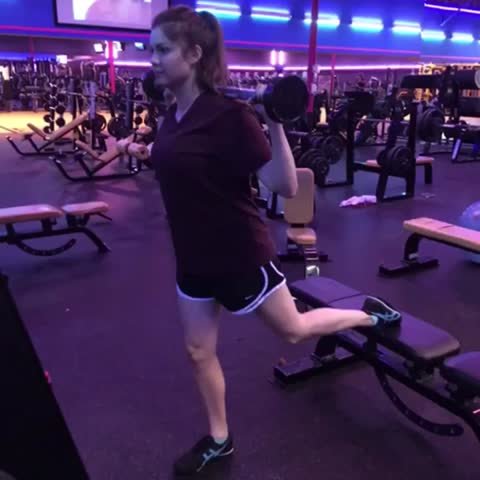
Log in to watch video demonstrations
Login to Watch3 video demonstrations available
Find more video demonstrations in the Gravitus app
Tips from the Community
-

The closer you have your front foot to the bench the more this exercise works the quads. The further away the front foot is from the bench the more it works the posterior chain and hip flexors.
-

Drop a plate on the floor to mark your ideal foot position.
-

Make sure your knee doesn't move past toe on descend.
-

Stay tight and strong throughout the entire movement.
-

Focus on pushing through your heel, to protect your knees.
Track your progress with Gravitus
Download Gravitus to log your workouts, track your progress, and join a community of fitness enthusiasts.

Helpful Resources
One Rep Max Calculator
Find your one rep max for any exercise without maximal testing. Essential for developing effective strength training programs.
Calculate 1RMWorkout Programs
Follow structured workout programs created by fitness professionals to maximize your strength and muscle gains.
View Programs